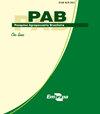黑麦草行播试验小区大小和重复数
IF 0.7
4区 农林科学
Q3 AGRICULTURE, MULTIDISCIPLINARY
引用次数: 0
摘要
摘要本研究旨在确定黑麦草行播鲜重评价的最佳小区面积和重复数。以“Barjumbo”黑麦草为材料,在16个0.51 m2的基本试验单元(beu)中进行了70次均匀性试验。在播种后130天、131天、133天、134天和137天,分别测定了均匀性试验18、18、6、6和22个试验组的黑麦草鲜重。采用变异系数最大曲率法确定最优地块面积。在组合处理形成的情况下确定重复数,并通过Tukey检验以5%的概率检测显著性差异,最佳地块面积为1.73 ~ 3.18 m2,最佳地块面积的变异系数为7.58 ~ 13.96%。根据试验设计、处理次数和采用的最小差异,重复数在3.95(~4)~ 32.27(~33)之间变化。最优地块面积为2.29 m2,在多达50个处理的试验中,需要8个重复才能确定处理平均值之间的显著差异为20.24%。本文章由计算机程序翻译,如有差异,请以英文原文为准。
Plot size and number of replicates for ryegrass experiments sowed in rows
Abstract The objective of this work was to determine the optimal plot size and the number of replicates for the evaluation of the fresh weight of ryegrass sowed in rows. Seventy uniformity trials were performed with 'Barjumbo' ryegrass, in 16 basic experimental units (BEUs) of 0.51 m2 each. The fresh weight of ryegrass in the BEUs of 18, 18, 6, 6, and 22 uniformity trials was determined, respectively, at 130, 131, 133, 134, and 137 days after sowing. The optimal plot size was determined through the method of the maximum curvature of the coefficient of variation. The number of replicates was determined in scenarios formed by combinations of treatments and differences between means to be detected as significant by Tukey’s test, at 5% probabilit y. The optimal plot size ranged from 1.73 to 3.18 m2, and the variation coefficient in the optimal plot size from 7.58 to 13.96%. The number of replicates varied from 3.95 (~4) to 32.27 (~33), depending on the experimental design, the number of treatments, and the adopted minimum difference. The optimal plot size is 2.29 m2, and, in experiments with up to 50 treatments, eight replicates are required to identify as significant the differences between treatment means of 20.24%.
求助全文
通过发布文献求助,成功后即可免费获取论文全文。
去求助
来源期刊

Pesquisa Agropecuaria Brasileira
农林科学-农业综合
CiteScore
1.20
自引率
0.00%
发文量
45
审稿时长
9-18 weeks
期刊介绍:
Pesquisa Agropecuária Brasileira – PAB – is issued monthly by Empresa Brasileira de Pesquisa Agropecuária – EMBRAPA, affiliated to Ministry of Agriculture, Livestock and Food Supply. PAB publishes original scientific-technological articles on Plant Physiology, Plant Pathology, Crop Science, Genetics, Soil Science, Food Technology and Animal Science.
Its abbreviated title is Pesq. agropec. bras., and it should be used in bibliographies, footnotes, references and bibliographic strips.
 求助内容:
求助内容: 应助结果提醒方式:
应助结果提醒方式:


